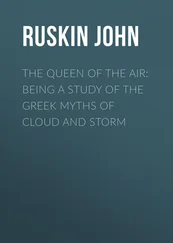George Dodd - The History of the Indian Revolt and of the Expeditions to Persia, China and Japan 1856-7-8
Здесь есть возможность читать онлайн «George Dodd - The History of the Indian Revolt and of the Expeditions to Persia, China and Japan 1856-7-8» — ознакомительный отрывок электронной книги совершенно бесплатно, а после прочтения отрывка купить полную версию. В некоторых случаях можно слушать аудио, скачать через торрент в формате fb2 и присутствует краткое содержание. Жанр: foreign_antique, foreign_prose, на английском языке. Описание произведения, (предисловие) а так же отзывы посетителей доступны на портале библиотеки ЛибКат.
- Название:The History of the Indian Revolt and of the Expeditions to Persia, China and Japan 1856-7-8
- Автор:
- Жанр:
- Год:неизвестен
- ISBN:нет данных
- Рейтинг книги:3 / 5. Голосов: 1
-
Избранное:Добавить в избранное
- Отзывы:
-
Ваша оценка:
- 60
- 1
- 2
- 3
- 4
- 5
The History of the Indian Revolt and of the Expeditions to Persia, China and Japan 1856-7-8: краткое содержание, описание и аннотация
Предлагаем к чтению аннотацию, описание, краткое содержание или предисловие (зависит от того, что написал сам автор книги «The History of the Indian Revolt and of the Expeditions to Persia, China and Japan 1856-7-8»). Если вы не нашли необходимую информацию о книге — напишите в комментариях, мы постараемся отыскать её.
The History of the Indian Revolt and of the Expeditions to Persia, China and Japan 1856-7-8 — читать онлайн ознакомительный отрывок
Ниже представлен текст книги, разбитый по страницам. Система сохранения места последней прочитанной страницы, позволяет с удобством читать онлайн бесплатно книгу «The History of the Indian Revolt and of the Expeditions to Persia, China and Japan 1856-7-8», без необходимости каждый раз заново искать на чём Вы остановились. Поставьте закладку, и сможете в любой момент перейти на страницу, на которой закончили чтение.
Интервал:
Закладка:
The most serious affair at Patna, however, occurred about the close of the period to which this chapter more particularly relates. At about eight o’clock in the evening of the 3d of July, a body of Mohammedans, variously estimated from eighty to two hundred, assembled at the house of one of their number, one Peer Ali Khan, a bookseller, and proceeded thence to the Roman Catholic church and mission-house in Patna, with two large green flags, a drum beating, and cries of ‘Ali! Ali!’ The priest, whom they probably intended to murder, fortunately escaped. They emerged into the street, reiterated their cries, and called on the populace to join them. Dr Lyell, principal assistant to the opium agent, immediately went to the spot, accompanied by nine Sikhs. He rode ahead of his support, was shot down by the rioters, and his body mangled and mutilated before the Sikhs could come up. A force of Sikhs and nujeebs speedily recovered the unfortunate gentleman’s body, killed some of the insurgents, and put the rest to flight. This appeared at first to be a religious demonstration: a Mohammedan fanatic war-cry was shouted, and the property of the Catholic mission was destroyed, but without any plunder or removal. Thirty-six of the insurgents were afterwards captured and tried; sixteen of the number, including Peer Ali Khan, who was believed to be the murderer of Dr Lyell, were condemned to death; eighteen, including a jemadar, were sentenced to various terms of imprisonment; and two were acquitted. All the facts of this temporary outbreak were full of significance; for it soon became evident that something more than mere religious hostility had been intended. Peer Ali Khan was offered a reprieve if he would divulge the nature of the conspiracy; but, like a bold, consistent fanatic, he remained defiant to the last, and nothing could be got out of him. It was afterwards ascertained that he had been in secret communication with an influential native at Cawnpore ever since the annexation of Oude, and that the details of some widely-spread plot had been concerted between them. The capture of the thirty-six rioters had been effected by the disclosures of one of the band, who was wounded in the struggle; he declared that a plot had been in existence for many months, and that men were regularly paid to excite the people to fight for the Padishah of Delhi. Letters found in Peer Ali’s house disclosed an organised Mussulman conspiracy to re-establish Mohammedan supremacy on the ruins of British power; and besides the correspondence with Cawnpore and Delhi, a clue was obtained to the complicity of an influential Mohammedan at Lucknow.
Patna was sufficiently well watched and guarded to prevent the occurrence of anything of more serious import. Nevertheless, the European inhabitants were kept in great anxiety, knowing how much their safety depended on the conduct of the sepoys at Dinapoor. The commissioner at the one place, and the military commandant at the other, were naturally rejoiced to receive any demonstrations of fidelity on the part of the native troops, even if the sincerity of those demonstrations were not quite free from doubt. On the 3d of June, Colonel Templer assembled the 7th regiment B. N. I. on the military parade at Dinapoor, to read to them the flattering address which Viscount Canning had made to the 70th regiment at Barrackpore, on the manifestation of loyalty by that corps. On the conclusion of this ceremony, the native commissioned officers came up to the colonel, and presented to him a petition, signed by two subadars and five jemadars on the part of the whole regiment. The petition is worth transcribing, 20 20 ‘At present the men of bad character in some regiments, and other people in the direction of Meerut and Delhi, have turned from their allegiance to the bountiful government, and created a seditious disturbance, and have made choice of the ways of ingratitude, and thrown away the character of sepoys true to their salt. ‘At present it is well known that some European regiments have started to punish and coerce these rebels; we trust that by the favour of the bountiful government, we also may be sent to punish the enemies of government, wherever they are; for if we cannot be of use to government at this time, how will it be manifest and known to the state that we are true to our salt? Have we not been entertained in the army for days like the present? In addition to this, government shall see what their faithful sepoys are like, and we will work with heart and soul to do our duty to the state that gives us our salt. ‘Let the enemies of government be who they may, we are ready to fight them, and to sacrifice our lives in the cause. ‘We have said as much as is proper; may the sun of your wealth and prosperity ever shine. ‘The petition of your servants: Heera Sing, Subadar, Ellahee Khan, Subadar, Bhowany Sing, Jemadar, Munroop Sing, Jemadar, Heera Sing, Jemadar, Isseree Pandy, Jemadar, Murdan Sing, Jemadar, of the Burra Crawford’s, or 7th regiment, native infantry, and of every non-commissioned officer and sepoy in the lines. Presented on the 3d June 1857.’
to shew in what glowing language the native troops could express their grateful allegiance – but whether sincere or insincere, no European could at that time truly tell. Colonel Templer desired that all the men who acknowledged the petition to contain an expression of their real sentiments and wishes, would shoulder their arms in token thereof; on which every one present shouldered arms. The native officers afterwards assured the colonel, with apparent earnestness, that it was the eager wish of the whole regiment to be afforded an opportunity of removing even a suspicion of their disaffection. When Colonel Templer repeated this to Major-general Lloyd, the military commander of the Dinapoor division, and when Lloyd forwarded the communication to Calcutta, the regiment of course received thanks for the demonstration, and were assured that ‘their good conduct will be kept in remembrance by the governor-general in council.’ It was not until a later month that the small value of these protestations was clearly shewn; nevertheless the Europeans at Dinapoor continued throughout June to be very uneasy. Almost every one lived in the square; the guns were kept ready loaded with grape; the few European troops were on the alert; and pickets were posted all round the station. A motley assemblage – planters, soldiers, civilians, railway men, and others – was added to the ordinary residents, driven in from the surrounding districts for protection. The officers gave up their mess-house to the ladies, who completely filled it.
In Tirhoot, a district north of Patna, on the other side of the Ganges, the planters and others were thrown into great excitement during the month of June, by the events occurring around them. About the middle of the month, planters left their estates and civilians their homes, to go for refuge to the Company’s station at Mozufferpoor. Eighty gentlemen, thirty ladies, and forty children, were all crowded into two houses; the ladies and children shut up at night, while the men slept in verandahs, or in tents, or took turns in patrolling. The nujeebs, stationed at that place, were suspected of being in sympathy with the mutineers; one of the Company’s servants, disguised as a native, went to their quarters one night, and overheard them conversing about murdering the Europeans, looting the treasury (which contained seven lacs of rupees), and liberating the prisoners. This was the alarm that led to the assembling of the Europeans at the station for mutual protection; and there can be little doubt that the protection would have been needed had Dinapoor fallen. One of the Mohammedan inhabitants was seized at Mozufferpoor, with a quantity of treasonable correspondence in his possession; and the commandant at Segowlie condemned to the gallows with very little scruple several suspicious characters in various parts of the district.
Читать дальшеИнтервал:
Закладка:
Похожие книги на «The History of the Indian Revolt and of the Expeditions to Persia, China and Japan 1856-7-8»
Представляем Вашему вниманию похожие книги на «The History of the Indian Revolt and of the Expeditions to Persia, China and Japan 1856-7-8» списком для выбора. Мы отобрали схожую по названию и смыслу литературу в надежде предоставить читателям больше вариантов отыскать новые, интересные, ещё непрочитанные произведения.
Обсуждение, отзывы о книге «The History of the Indian Revolt and of the Expeditions to Persia, China and Japan 1856-7-8» и просто собственные мнения читателей. Оставьте ваши комментарии, напишите, что Вы думаете о произведении, его смысле или главных героях. Укажите что конкретно понравилось, а что нет, и почему Вы так считаете.












